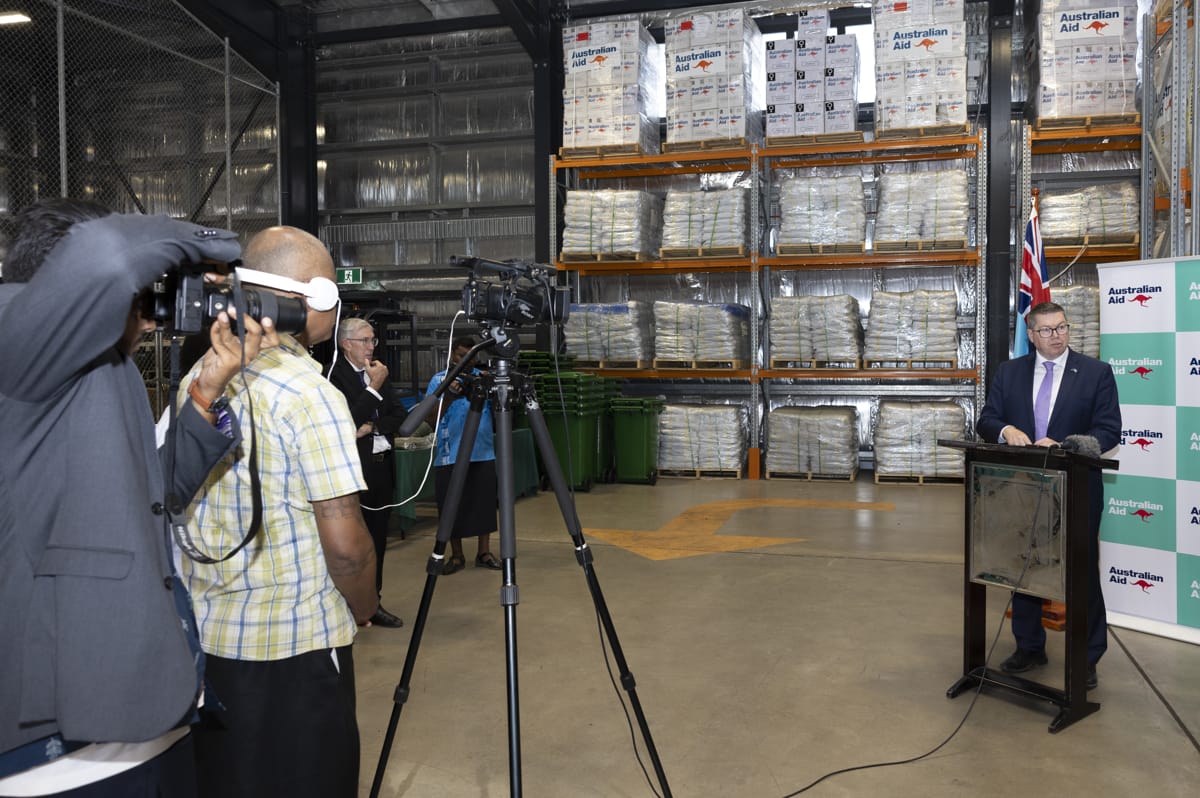During an address to the Lowy Institute this month, Treasurer Jim Chalmers spoke of “the need for unprecedented coordination and ambition in our statecraft, harnessing all elements of our national power to advance Australia’s interests”. This was the latest in a now familiar pattern of ministerial speeches on the need for a “whole-of-nation”, “all tools of statecraft” approach to Australia’s international engagement. But it was the first time the Treasurer had used such a framing publicly, and in doing so he foreshadowed that “the budget will be key in this regard.”
The federal budget is itself a tool of statecraft. Via abacus, it lays out the government’s balancing of priorities in the rawest form – as dollars on a balance sheet. And in his budget speech delivered last week, Chalmers promised it would “make Australians and Australia more secure” in “a world of churn and change”.
So how does the budget compare to the rhetoric?
In the broad foreign affairs portfolio, the government pledges “the reversal of the long-term reduction in diplomatic resources and increased diplomatic efforts.” And in this, the budget does build on positives from last year, allocating $254.2 million over four years “to improve the capability of the Department of Foreign Affairs and Trade to deliver foreign policy outcomes” through investments in things that keep the department running, such as IT security and infrastructure maintenance.
Security has many parents, and needs to be pursued in different, mutually reinforcing ways.
In terms of development, Australia’s immediate region is a clear focus, with an additional $505.9 million over five years earmarked for initiatives such as the Partnerships for Infrastructure program and Mekong-Australia Partnership. Money is also allocated to establish an ASEAN-Australia Centre in Canberra and a Southeast Asia Investment Financing Facility.
Aid to Tuvalu sees a fourfold increase following the signing of the Falepili Union treaty. A new $50 million submarine telecommunications cable comes in addition to $15 million for a National Security Coordination Centre. And $64 million of new money has been allocated to the Pacific Resilience Facility and Green Climate Fund, representing a small increase from the previous financial year.
An emphasis on blended finance – the “semi-commercialisation” of development – is also apparent in the “expanded suite of alternative financing approaches” such as the new Southeast Asia Infrastructure Investment Fund. These types of initiatives can help bridge a widening financing gap by catalysing private sector investment, something that should be welcomed as part of a “whole-of-nation” approach leveraging Australia’s business community. But steps need to be taken to ensure this doesn’t come at the expense of transparency and accountability.

It also needs to be done in conjunction with, not instead of traditional official development assistance, which regrettably remains static at 0.19% of gross national income (and is projected to fall to as low as 0.14% by 2035). The budget papers state that “our prosperity, security and economic future is tied to our region”, but according to Australia’s peak development body, the Australian Council for International Development (ACFID), “it’s hard to see how the ambition set out in the International Development Policy launched in August last year has gained any fiscal traction in shaping core development programming”.
Here it is worth quoting Minister for International Development and the Pacific (and Minister for Defence Industry) Pat Conroy’s Alfred Deakin Oration speech in October last year, where he said that:
“development policy is at the heart of our approach to statecraft. It is not the poor cousin of orthodox diplomacy, or trade policy or defence policy. It is an essential element of advancing Australia’s interests, shaping how our nation is perceived internationally and, most importantly, lifting people out of extreme poverty and contributing to peace and stability. By helping lift people out of poverty, Australia’s international development policy advances our strategic interests in shaping a region that is stable and secure.”
But as ACFID’s Marc Purcell laments, this budget falls short of those objectives: “Australia’s aid budget is static in real terms while the Asia-Pacific region is way off track to achieve the SDGs [Sustainable Development Goals]. We are going backwards on eradicating extreme poverty.”
Conroy’s point that development is not the “poor cousin” of Defence also rings rather hollow given that the $50.3 billion of supplementary funding for Defence over the next decade is equivalent to more than ten ODA budgets, part of a “total investment in defence” that is expected to cost $765 billion by 2033–34.
Enhanced defence capability is an intrinsically and unavoidably expensive endeavour. But security has many parents, and needs to be pursued in different, mutually reinforcing ways – not just be left to Defence alone. The National Defence Strategy launched in April recognises this when it calls for “a coordinated, whole-of-government and whole-of-nation approach that harnesses all arms of national power”.
None of this is to say that Defence spending should be radically cut, but it does underscore the importance of adequately resourcing other tools that are better suited to laying and reinforcing the foundations for a more stable and prosperous region, that in turn contributes to Australia’s own security and prosperity. Investing in human security and state security should be seen as complementary and mutually reinforcing endeavours rather than competing paradigms.
The government continues to take positive steps toward realising its vision of a “whole-of-nation”, “all tools of statecraft” approach. But without the requisite allocation of resources to that end, there is a risk that the rhetoric remains just that.

